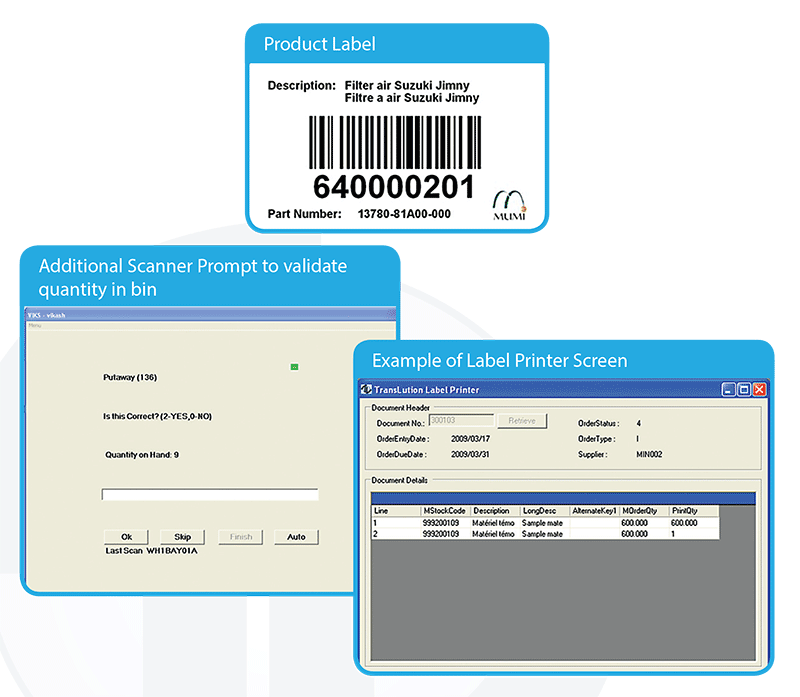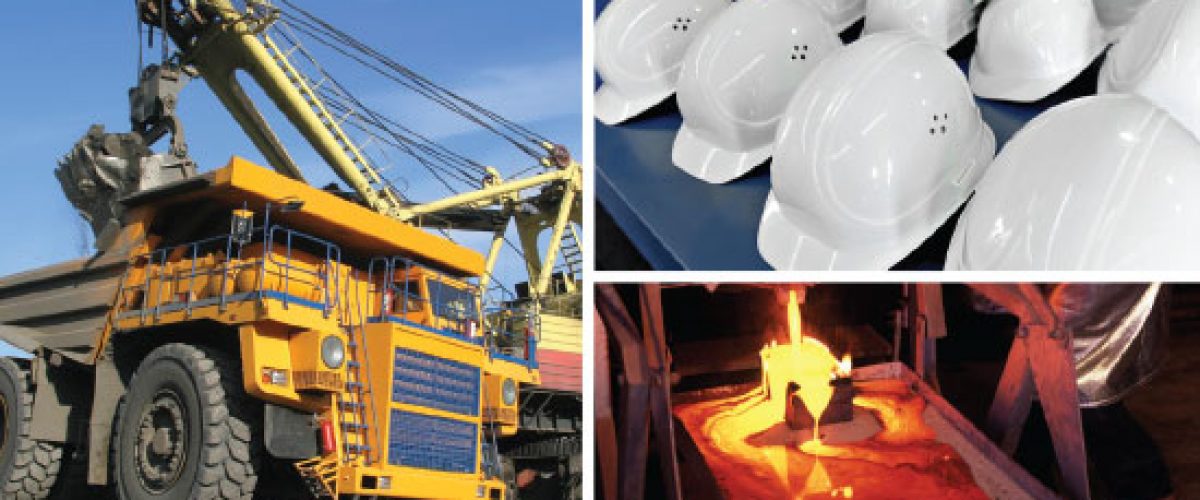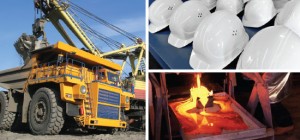Warehousing Case Study: Mining
Project Background
This project was implemented for a mine in the DRC, specifically in the stores area where spares and other mining equipment are kept. While the store was not large, the client had never had a mechanism to manage stock accuracy on the floor and was experiencing severe losses and stock accuracy problems.
TransLution Functionality
This project used a number of the standard TransLution scanning features, with some interesting adaptations that could be useful in other implementations. The receiving, picking and transfer process implemented are all relatively standard uses of TransLution scanning. However in this case, all scanner prompts are in both French and English to support the languages most commonly spoken by staff on site.
The TransLution label printing application was used in this implementation. This application has a single form that can be configured to show all the lines on a purchase order (or any kind of document) along with an additional column that allows the user to specify the number of labels to print for each line. In the case of a Purchase Order, for example, the print quantity could be the same as the PO quantity, or in the case of a box of 1000 nails, only a single label may be required.
An extra prompt was added into most of the scanner prompt sequences. Whenever a user moves products (receiving, put
away, bin transfers, requisition picks), the system shows the quantity that is expected to be in the destination location on the scanner screen. The user is asked to confirm the quantity; if he indicates the amount is incorrect, an email is automatically sent to the supervisor identifying the quantity error by location and product. This serves as the basis of an on-going cycle count mechanism used to maintain an extremely high level of accuracy in all bins at all times. This is a good example of the beneficial use of a non-processed prompt.
System Overview
A TransLution Server and RF Server was installed on site. The TransLution database is on the same server as the ERP software database. Six wireless scanners were used.
Benefits
The biggest initial benefit of implementing a scanning system in this environment was the improvement in stock accuracy. Stock accuracy and speed of picking was improved. Emergency requirements due to breakdowns are relatively frequent and improved response times directly affecting production, benefiting the whole site. Integration of stock data, including stock take information, with the ERP software was also instrumental in improving ERP accuracy.
Barcode Labels And Structures
All labels used on site are printed as part of the receiving process, ensuring a high degree of labeling accuracy.
Often relying on multiple suppliers to supply labeled products leads to problems with label accuracy and data integrity. Label integrity is less of an issue when items are supplied with retail barcodes. However in all cases, when the product labeling forms part of the system implementation, detailed barcode validation is required.
Success Factors And Challenges
The primary challenge in this project was distance. The site is in a remote location in the DRC. It was therefore important to plan and design the project carefully, completing as much work as possible before implementation, reducing time spent on-site and the associated costs.
The project champion is a skilled IT manager with a great deal of ERP implementation experience. This is particularly important for remote sites in which certain activities, such as changing barcode label printer ribbons, have to be managed by staff on site.
Other challenges related to the issue of language. Making labels and scanner prompts bi-lingual was helpful, however in-depth training was also an important factor in contributing to the success of the project.



